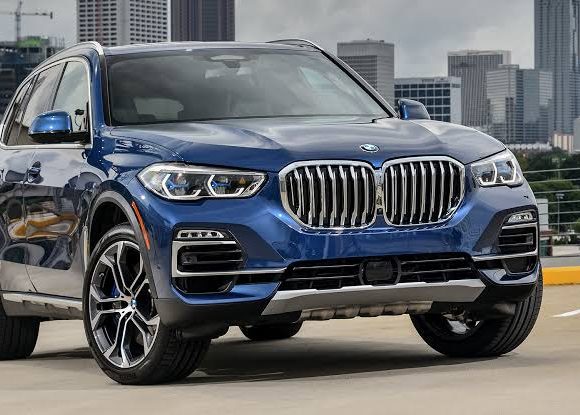Maruthi Suzuki Baleno……..

The Indian automotive industry is a hit or miss business. You could have all the resources in the world and still come up with a car that no one actually wants to buy. But these days most manufacturers have perfected the art of launching an ‘okay’ product that sells, but only a handful of them do make exceptional cars. One such manufacturer who almost never gets it wrong these days is Maruti and we got to sample their new Baleno in Jaipur, last month. Now, here is one car that will spike the footfalls at your nearest Nexa dealership.
The new Baleno shares nothing, except the name with the old sedan from the early 2000 s, It is a thoroughly modern car whose platform will underpin more new models from Maruti next year. India is the manufacturing hub for the Baleno and it will be exported from here to the rest of the world. Although ducking under the 4 metre mark, the Baleno feels large – thanks to its 2520 mm wheelbase and 1745 mm width. The shape is slightly more rounded than the Swift and has good presence on the road. The slanting rear windscreen and rising shoulder line give it great dynamism. The front end is unmistakably Suzuki, with its new V shaped grill and headlights that look like smaller versions of the one on the Swift. The top spec car comes with projector headlamps, day time running lights and lashings of chrome on the door handles, window base line and rear boot lid. It isn’t often that the design department at Suzuki comes up with a pleasing car that will appeal to most age groups. Our only gripe with the styling are , those 16 inch alloy wheels that look like wheel caps.
Inside, the Baleno continues to impress even more. There is ample amount of space both at the front and rear making it a great family car. The front seats are the most comfortable of any small car and the rear seat, saved for the slight lack of headroom, is quite good too. The dashboard and the rest of the trim are finished in black and this lends a degree of sophistication to the Baleno’s interiors. A 7-inch touch screen system with Apple CarPlay takes the pride of place in the dashboard. It is an impressive unit with good screen resolution, integrated reverse camera and navigation and can now mirror your iPhone and let Siri take care of the voice commands for you. The instrument cluster also gets a 4.2 inch , colour TFT screen that displays a lot of information about the car, right from range and fuel consumption to a graphic that shows how much power and torque are being used. There are ample storage spaces in the cabin, the boot; although it has a high loading lip, is reasonably large at 339 litres and the 60:40 split rear seat maximizes practicality.
Powering the Baleno are the 1.2 litre K series petrol and 1.3 litre DDiS that you find under the bonnets of the Swift, Ritz and DZire. While the engines could do with more power, the Baleno feels adequate thanks to its generous weight savings of nearly 100 kgs when compared to the smaller Swift. This makes the 75 bhp diesel as fast as the 90 bhp i20 diesel. There is some turbo lag, but the power delivery feels much more linear than before. Only when you really go for it, does the Baleno feel like it could do with more power, may be it should have had the 90 bhp variable geometry turbo version of the same engine. The 84 bhp petrol on the other hand feels lively and willing to rev, all with impressive refinement to match. The shorter ratios of the gearbox and the lighter kerb weight (890 kg) make it quicker off the line than most 1.2 litre cars from its class. Gearshift quality is positive and light clutch makes for easy drive in both diesel and petrol variants. For those who want to do away with both, there is a CVT variant on offer that in our drive returned great fuel efficiency as well. Fitted with a small torque convertor, this continuously variable transmission offers good throttle responses in town. As long as you don’t rev it up to 4000 rpm, the rubber band effect that is typical of such gearboxes isn’t noticeable either. That said; put sudden throttle demands and the engine revs up quite high and the car picks up speed rather leisurely. Still, if you are going for a petrol automatic car, this is without doubt the best engine and gearbox combination in its class.
Whoever believes that only heavy cars offer a good ride, has to try the Baleno. It glides over broken roads with a big car feel that defies its light build. Straight line stability is also impressive with the Baleno maintaining highway speeds without too much effort from the driver. The steering feels better calibrated too and while it isn’t as agile as the Swift, the Baleno is still good fun around corners.
The Baleno offers good looks, nice interiors, practicality and equipment list making it a very attractive proposition in the premium hatchback segment. It is good to drive and even the basic model comes with ABS and airbags as standard. Plastic quality inside the cabin is more than adequate but not the best in class, and borrowed switches and steering wheel from lesser Marutis stay as a reminder that Maruti didn’t have the budget of some of its competitors to splurge on the cosmetic stuff. But then, it doesn’t cost that much either. With base models starting around rupees 5 lakh mark, the Baleno is only Rs.30,000 more than the Swift and undercuts rivals like the Hyundai i20 and Jazz. It is a fantastic value for money and is undoubtedly the pick of the segment, right now.
Vivek Venugopal











